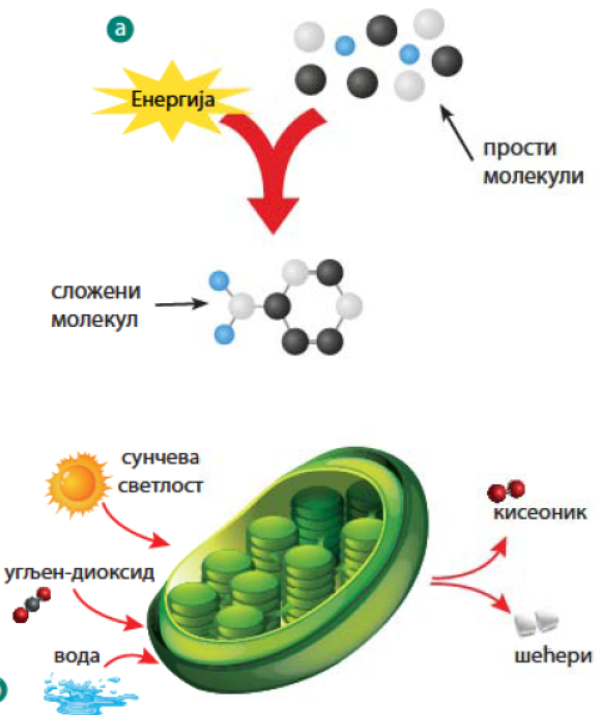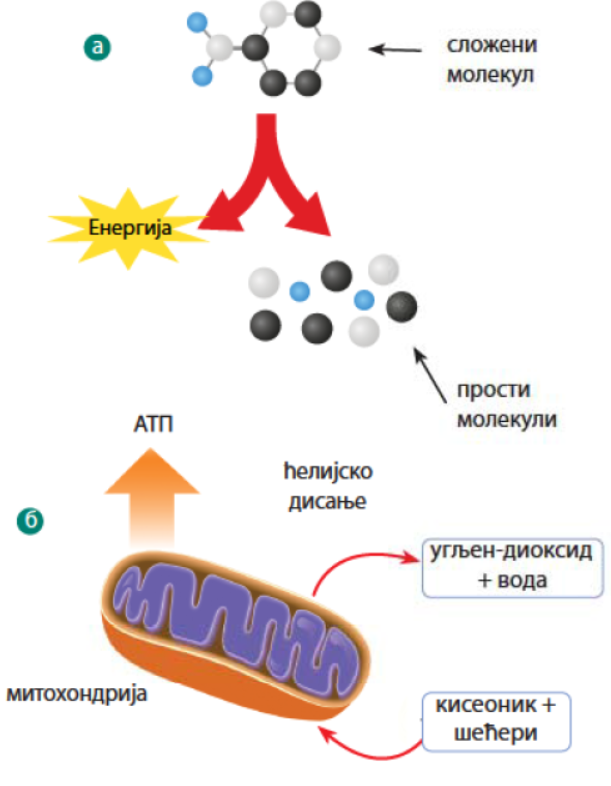atomistica.online
Metabolism
Metabolism
Reminder
When we say that the cell is the basic building block of living organisms, we mean that every organism, whether made of a single cell or many cells, has a cellular structure.
Cells are not only building blocks but also the basic units of function, because all life processes and activities in an organism happen as a result of what cells do.
What is Metabolism?
The processes that take place inside a cell are essential for keeping it functioning and helping it grow. These processes are also important for the entire organism.
Each of these processes involves a series of biochemical reactions, during which complex substances are either built or broken down.
Biochemical reactions that involve changes to chemical substances, whether creating or breaking them, are collectively called metabolism.
Some of these reactions use energy, while others release energy.
Diagrams
In multicellular organisms, cells are specialized:
- Nerve cells[1] transmit signals

a) To build complex organic molecules from simpler ones, energy is required.
b) Plants use the energy from sunlight to build complex molecules from simple ones like carbon dioxide and water
- Muscle cells help movement

a) The process of breaking down complex molecules releases energy.
b) In mitochondria, complex molecules (like sugars) are broken down into simpler ones (carbon dioxide and water), and energy is released. This energy is then used to produce ATP molecules, which later release energy needed for other biochemical reactions inside the cell.
Photosynthesis Example
In plants, one important metabolic process is photosynthesis. During this process, plants:
- Use the energy from sunlight,
- To combine carbon dioxide and water,
- And build complex organic molecules (like sugars),
- While releasing oxygen into the air.
This process happens inside chloroplasts, the green structures in plant cells.
Cellular Respiration Example
The opposite of photosynthesis is cellular respiration, which occurs in the mitochondria of cells.
In this process:
- Complex molecules (like sugars) are broken down,
- Producing simple molecules like carbon dioxide and water,
- And releasing energy.
That energy is used to make ATP (adenosine triphosphate), the main molecule cells use for energy.
Overview
- Cells are the basic units of structure and function in all living organisms.
- Metabolism is the sum of all chemical (biochemical) processes in a cell.
- These processes either build or break down molecules.
- Building complex molecules from simple ones requires energy.
- Breaking down complex molecules into simpler ones releases energy.
- Photosynthesis is an energy-using process that happens in chloroplasts
- Plants use sunlight, carbon dioxide, and water to make sugars and oxygen.
- Cellular respiration is an energy-releasing process that happens in mitochondria
- Sugars are broken down into carbon dioxide and water, and energy is released.
- This energy is used to make ATP, the energy currency of the cell.
